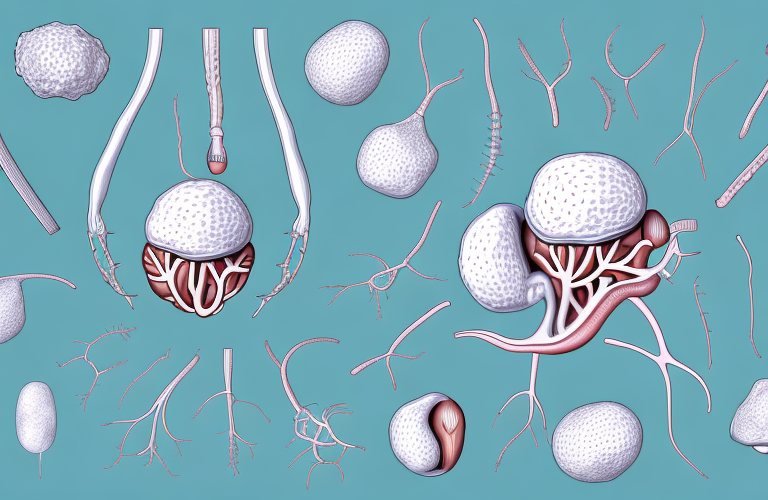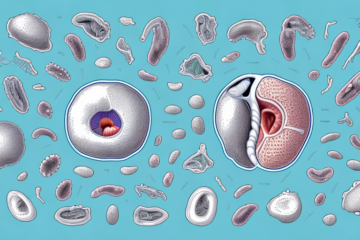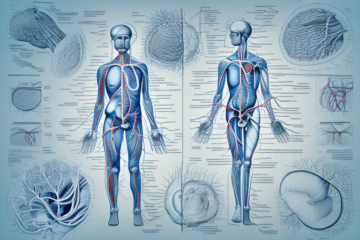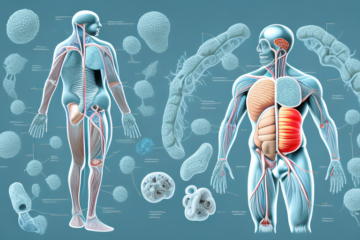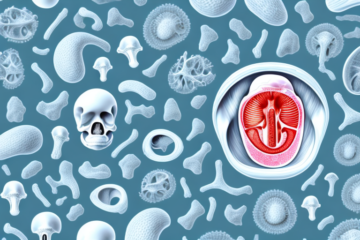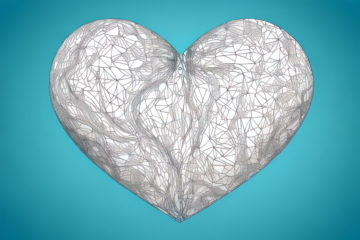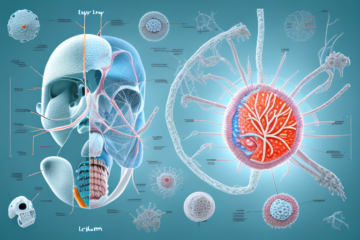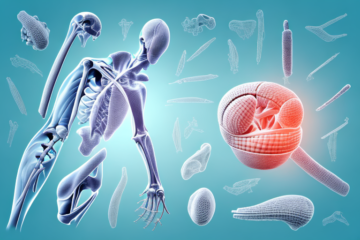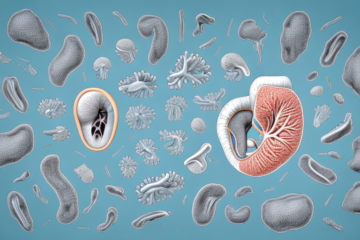The scrotum is a pouch-like structure located underneath the penis in males. It is composed of skin, muscle, and connective tissue, and houses the testes or testicles. The scrotum has a unique anatomy and function that plays a vital role in male reproduction. In this article, we will explore the various aspects of the scrotum, including its definition, structure, role in male reproduction, common conditions that affect it, and self-care tips for maintaining a healthy scrotum.
The Scrotum: Definition and Structure
The scrotum is a sac of skin that hangs from the lower part of the groin region. It is divided into two compartments, each of which houses a testicle. The scrotum is lined with a thin layer of muscle called the dartos muscle, which helps to regulate the temperature within the scrotum and the testes. The external surface of the scrotum is covered with hair, while the internal surface is smooth and lubricated by a thin layer of fluid.
The scrotum is richly supplied with blood vessels and nerves that help to regulate blood flow and sensation in the area. It is also highly sensitive to touch and temperature, with the ability to retract or relax in response to changes in environmental conditions.
The scrotum plays a crucial role in the production and regulation of sperm. The testicles within the scrotum produce and store sperm, which is then transported through a series of ducts and tubes to the urethra for ejaculation. The temperature within the scrotum must be carefully regulated, as sperm production is most efficient at slightly lower temperatures than the rest of the body.
In addition to its reproductive functions, the scrotum can also be a site of various medical conditions. These can include infections, inflammation, and tumors. Regular self-examination of the scrotum is recommended to detect any abnormalities or changes in size or texture, which may require medical attention.
The Role of the Scrotum in Male Reproduction
The scrotum plays a critical role in male reproduction. Its primary function is to protect the testes and help to maintain the optimal temperature for sperm production. The testes require a lower temperature than the rest of the body to produce viable sperm, and the scrotum helps to facilitate this by regulating blood flow and muscle contraction.
When the temperature is too high, the scrotum relaxes, and the testes move away from the body to cool down. Conversely, when the temperature drops, the scrotum pulls the testes closer to the body to keep them warm. This mechanism allows for the optimal production of sperm and is critical for male fertility.
In addition to regulating temperature, the scrotum also plays a role in protecting the testes from external trauma. The scrotal skin is thicker and more elastic than other skin on the body, which helps to absorb shock and prevent injury to the testes. This is especially important during physical activities such as sports or manual labor, where the testes may be at risk of impact or compression.
How Does the Scrotum Control Testicular Temperature?
The scrotum controls testicular temperature through a process known as thermoregulation. The scrotum contains a network of blood vessels, which are responsible for delivering oxygen and nutrients to the testes and removing waste products. By dilating or constricting these blood vessels, the scrotum can control the amount of blood flowing to the testes and regulate their temperature.
In addition, the dartos muscle in the scrotum can contract or relax to move the testes closer or further away from the body, depending on the temperature. This process helps to maintain the optimal temperature for sperm production and ensures the viability of the sperm.
It is important to note that external factors, such as environmental temperature and clothing, can also affect testicular temperature. For example, wearing tight clothing or sitting for long periods can increase scrotal temperature and negatively impact sperm production. Therefore, it is recommended to wear loose-fitting clothing and take breaks from sitting to maintain optimal testicular temperature and promote healthy sperm production.
Common Conditions That Affect the Scrotum
Despite its importance in male reproduction, the scrotum can be vulnerable to various conditions that can affect its normal function. Some of the common conditions that affect the scrotum include:
Scrotal Pain: Causes and Treatment Options
Scrotal pain is a common condition that affects many men at some point in their lives. It can be caused by a variety of factors, including trauma, infection, inflammation, or nerve damage. Treatment options for scrotal pain depend on the underlying cause and may include medication, surgery, or lifestyle changes.
Testicular Torsion: Symptoms, Diagnosis, and Management
Testicular torsion is a medical emergency that occurs when the testicle rotates on its axis, causing the blood flow to the testes to be cut off. Symptoms of testicular torsion include sudden and severe pain, swelling, and nausea. Immediate medical attention is required to prevent permanent damage to the testes.
Epididymitis: Causes, Symptoms, and Treatment
Epididymitis is a condition characterized by inflammation of the epididymis, a small tube located at the back of the testicle. It can be caused by a bacterial or viral infection and can result in pain, swelling, and fever. Treatment options for epididymitis may include antibiotics, pain medication, or surgery.
Varicocele: Symptoms, Diagnosis, and Treatment Options
Varicocele is a condition where the veins in the scrotum become enlarged, causing blood to pool and resulting in swelling and discomfort. It can affect sperm production and is a common cause of male infertility. Treatment options for varicocele may include medication, surgery, or lifestyle changes.
Hydrocele: Causes, Symptoms, and Treatment
Hydrocele is a condition where fluid collects around the testicle, causing swelling and discomfort. It can be caused by injury, infection, or a problem with the lymphatic system. Treatment options for hydrocele may include medication, surgery, or lifestyle changes.
Testicular Cancer: Risk Factors, Symptoms, and Screening Guidelines
Testicular cancer is a type of cancer that develops in the testicles. It is rare but can be aggressive and requires early detection and treatment. Risk factors for testicular cancer include age, family history, and personal history of testicular cancer. Symptoms of testicular cancer may include a lump, swelling, or pain in the scrotum. Screening guidelines for testicular cancer recommend self-exams and regular checkups with a healthcare provider.
Orchitis: Causes, Symptoms, and Treatment
Orchitis is a condition characterized by inflammation of one or both testicles. It can be caused by a bacterial or viral infection, and can result in pain, swelling, and fever. Treatment options for orchitis may include antibiotics, pain medication, or surgery.
Scrotal Hernia: Causes, Symptoms, and Treatment
Scrotal hernia is a condition where part of the intestine protrudes through a weak spot in the abdominal wall and into the scrotum. It can cause pain, swelling, and discomfort, and may require surgery to repair the hernia.
Self-care Tips for Maintaining a Healthy Scrotum
Maintaining a healthy scrotum is essential for male reproductive health. Here are some self-care tips for keeping your scrotum healthy:
- Practice good hygiene by washing the scrotum and genital area daily
- Avoid tight underwear or clothing that can restrict blood flow to the scrotum
- Avoid activities that can cause trauma to the scrotum, such as contact sports
- Perform regular self-exams to check for any abnormalities or changes in the scrotum
- Seek immediate medical attention for any scrotal pain or swelling
- Eat a healthy diet, exercise regularly, and maintain a healthy weight, which can reduce the risk of conditions that affect the scrotum
In addition to these self-care tips, it is important to schedule regular check-ups with a healthcare provider. They can perform a physical exam and provide additional guidance on maintaining a healthy scrotum. It is also important to note that certain medical conditions, such as testicular cancer, can affect the scrotum. Knowing the signs and symptoms of these conditions and seeking prompt medical attention can improve outcomes and overall health.
Conclusion
The scrotum is a unique structure with a critical function in male reproduction. Its anatomy and physiology are carefully designed to protect and facilitate the healthy development of the testes and the production of viable sperm. Despite its importance, the scrotum can be vulnerable to various conditions that can affect its normal function. By practicing good self-care and seeking medical attention for any abnormalities or changes in the scrotum, men can maintain good reproductive health and ensure the optimal functioning of this vital area.
One common condition that can affect the scrotum is testicular torsion, which occurs when the testicle twists on its spermatic cord, cutting off blood flow to the testicle. This can cause severe pain and swelling and requires immediate medical attention to prevent permanent damage to the testicle. Another condition that can affect the scrotum is epididymitis, which is inflammation of the epididymis, a small organ that sits on top of the testicle and stores sperm. This can cause pain, swelling, and redness in the scrotum and may be caused by a bacterial infection.
Overall, it is important for men to be aware of the normal appearance and function of their scrotum and to seek medical attention if they notice any changes or abnormalities. By taking care of this vital area, men can ensure their reproductive health and maintain their overall well-being.

